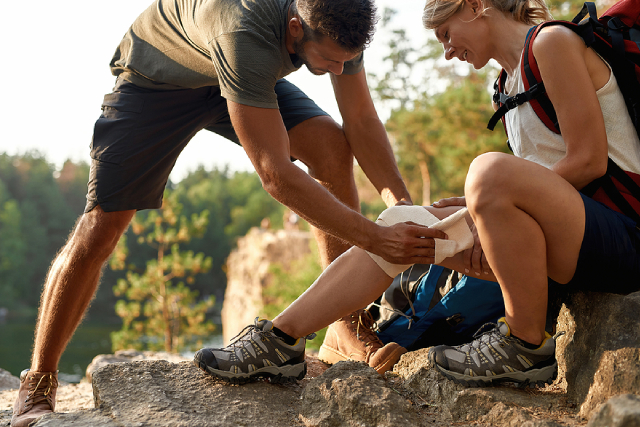
More often than not, when we travel, we find ourselves in more compromising situations than we would have thought. Bites from insects that we have never seen, catching a cold due to the foreign climate, cuts and bruises due to our clumsiness in the area are just a few instances that might happen while on tour.
To be prepared, we are always instructed to bring a fully stocked first aid kit, but the question is, do we know how to use the items within?
Here is a handy guide to the common injuries or illnesses, from most to least likely, you may encounter.
The Flu
Different from the common cold, the flu or influenza is most commonly contracted through an airborne virus. As the flu symptoms are more intense than colds, they are more likely to cause serious health complications such as pneumonia and bacterial infections.
In anticipation, most travellers are likely to get a flu jab and allow for some time for the vaccine to take effect before the trip. It is also crucial to bring along medication such as cough drops, fever reducers and lozenges. Use the dosage that you are customarily administered back at home. If your fever or body aches persist after 48 hours, it is best to seek local medical attention.
Cuts
Cuts are also common ailments experienced, especially if you plan to travel to places that might pose a hazard. These include mountain climbing or trekking through dense forests. Since prevention is better than cure, you should avoid pointed or sharp items when you see them.
To treat cuts, you would need some items in your first aid kit – essentials include bandages, antiseptic lotion and gauze. If you get cut, wash it with water poured targeted to the injury, clean it out with the antiseptic cream before using the gauze to absorb the blood and secure fresh gauze over the wound with a packed bandage. If the cut is deep and requires stitches, you should seek help from the nearest medical facility.
Allergies
If you experience allergies at home, do not think you will not have them elsewhere. In anticipation, remember to pack in enough antihistamines to prepare for any allergy attacks or symptoms; itch relievers can help with rashes.
An allergic reaction can also happen when you come into contact with poisonous plants. As such, wear long sleeves and pants when you are trekking through the terrain. If you have come across the plant, wash the entry point as soon as possible and avoid scratching as it may cause the poison to spread. Seek medical attention from a nearby facility if it’s serious.
Burns
In addition to sunburns, which we can prevent with sunblock, we could also potentially experience burns from campfires or cooking. We can be careful when setting up a fire or preparing meals, but sometimes our carelessness gets ahead of us.
Run the affected area under cold water for 10 minutes before applying antibiotics and ointments to treat the burns. Finish off the dressing with a gauze or bandage. For severe burns, follow the stipulated emergency medical evacuation plans and seek help as soon as possible.
Fractures
Hiking is a commonly enjoyed activity amongst tourists – however, it is one of the activities with a high probability of people sustaining injuries. Sometimes, critical injuries like fractures can happen when we are not careful. Fractures give you a sensation similar to a sprain, but the internal effects are way more severe.
You would also not be able to move about, so if you are in the wilderness, get someone around to call for an air ambulance service for immediate evacuation.
After calling for help, find a spot without sharp sticks and poles before resting. Then put a non-inflated pad beneath the site of fracture, otherwise, some rolled up clothing will also suffice. Using anything you can find as a sling, try to wrap the padding around the fracture to make the inclination of the joint close to 90 degrees or as close to a right angle as possible. If it is too tight, loosen the ties as it might cut off circulation.
Bonus: COVID-19
Besides stocking up on the first aid basics like bandages, thermometer, fever reducers and pain medication, you might want to include facemasks, lots of disinfectant wipes, hand sanitisers and disposable gloves.
Having anti-diarrheal medicines would also be good, as it is a common side effect of COVID-19. If you have a pulse oximeter, take that with you as well. Oximeters measure blood oxygen levels. If you find your oxygen level below 90%, consult a doctor or seek medical assistance services immediately.
In addition to the above, do remember to read up on the local travel guides on COVID-19 updates and adhere to any required measures. Getting vaccinated would be ideal. The standard would always be to get tested and self-quarantine 14 days before your trip, but may depend from country to country due to the always changing measures.
Conclusion
We hope you would be prepared enough to brave the unknowns and travel wherever the wind takes you with this simple guide. Just remember to have your first aid kit on hand at all times, especially if you are planning to travel in the wilderness, and you should be well-prepped for any dangers you might face along the way.

